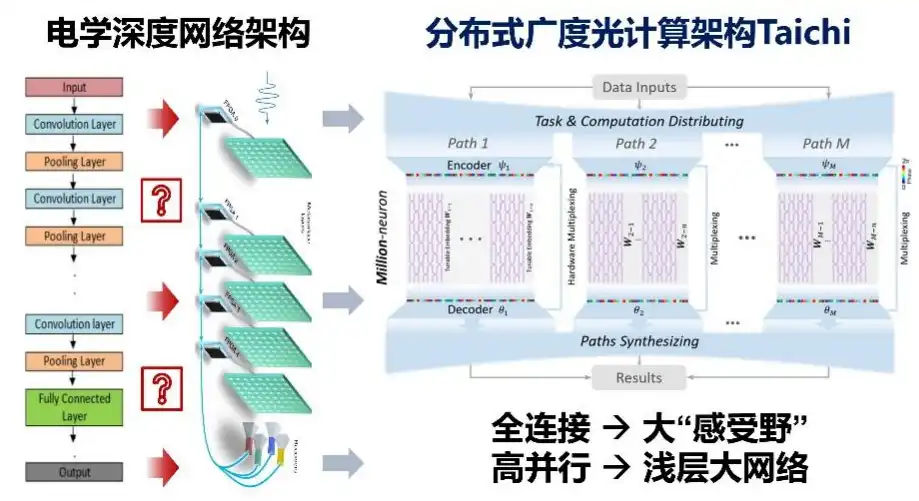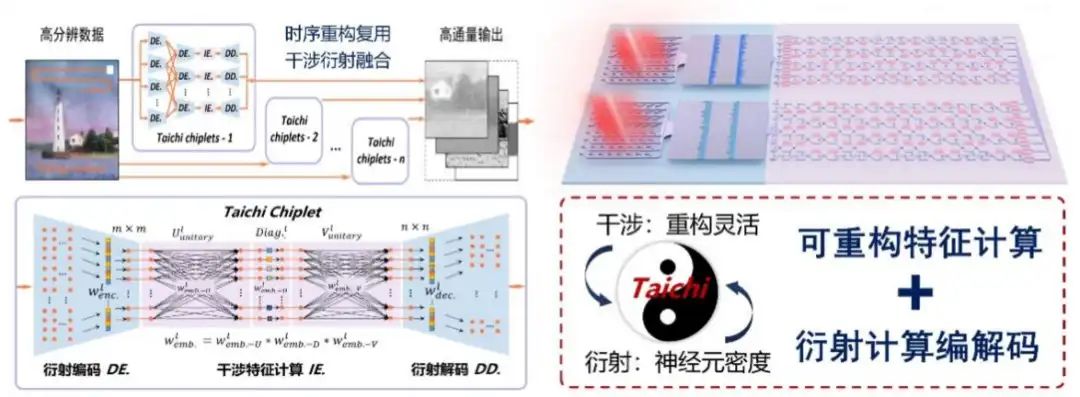Guangzixin Road:Tai Chi Light Core Lights Up a New Future of Artificial Intelligence
Fang Lu's research group, associate professor of the Department of Electronic Engineering of Tsinghua University, and Dai Qionghai's research group of Academician of the Department of Automation, pioneered a distributed breadth optical computing architecture and developed a large-scale interference-diffraction heterogeneous integrated chip Taiji to achieve universal intelligent computing at 160 TOPS/W.
4月11日从清华大学获悉,针对大规模光电智能计算难题,清华大学电子工程系副教授方璐课题组、自动化系戴琼海院士课题组,摒弃传统电子深度计算范式,另辟蹊径, The first distributed breadth optical computing architecture was developed and the large-scale interference-diffraction heterogeneous integrated chip Taichi was developed to achieve universal intelligent computing at 160 TOPS/W.。
In today's era of vigorous development of large-scale model general artificial intelligence, this scientific research achievement explores new inspiration, new architecture and new path for high-performance computing power with the way of photons. Relevant scientific research results were published in the latest issue of the international journal Science.

▲ Transform "deep" into "broad":Distributed breadth optical computing architecture.
As an emerging computing mode, intelligent optical computing has demonstrated its performance and potential far beyond silicon-based electronic computing in the post-Moorish era. However, its computing tasks are limited to simple character classification, basic image processing, etc. The pain point is that the computing advantages of light are trapped in inappropriate electrical architectures, and the computing scale is limited, unable to support intelligent computing of complex large models that urgently require high computing power and high energy efficiency.
 ▲ 两仪一元:干涉-衍射融合计算芯片。
▲ 两仪一元:干涉-衍射融合计算芯片。
According to reports **, the computing energy efficiency of Taiji optical chips is 2-3 orders of magnitude higher than that of existing smart chips **, and will be able to provide intelligent analysis of the speed of light in large scenarios with tens of billions of pixels, training and reasoning for large models with tens of billions of parameters, and low-milliwatt power consumption autonomous intelligent unmanned systems provide computing power support.
